How to Stay Warm While Fly Fishing in the Winter

To get in as much fishing as possible to satisfy my obsession, I’ve found that I can’t let the weather stop me from heading to the river. This mentality has led me to stand in some of the coldest water imaginable in the dead of winter, swinging my humble fly with teeth chattering.
I’ve learned many cold-weather fly fishing lessons the hard way. But more than anything else, I’ve found that in order to be truly comfortable no matter how cold it gets, you have to be prepared with the right gear and you have to know how to use it.
Tips to Stay Warm Fly Fishing in the Winter
- It’s all about layering, A good layering system will move moisture away from your body and trap as much body heat as possible to keep you warm.
- Go with wool or synthetics,? Avoid cotton if you can as it’s practically useless once wet. Nice merino or poly base and mid layers cost more than normal long johns but ask anyone who’s made the switch and they’ll tell you they’re worth it.
- Puffy jackets and fleece are your friends, Fleece wading pants will serve you well for 90 percent of your winter fly fishing jaunts but on the coldest of days, having a puffy layer on is ride or die.
- Give your body room to breathe and the heat will flow, If your boots or layers are too tight, you’ll be cutting off both your blood flow and heat flow within your waders. Fit your gear loose but not sloppy.
- Don’t leak heat out your hands, feet, or head, Gloves and a toasty hat will keep your spirits high and if you want to fish all day, your sock game better be dialed in.
- Try a chemical body warmer,? Surely you’ve experienced the glory of a hand warmer tucked into your glove but did you know they make body warmers, too. On those sub-zero days, why wouldn’t you try one.
- Bring something warm to sip! Most of what I cover in this article relates to staying warm by retaining body heat, but you’re gonna want to add some internal heat as well. A thermos of coffee or cocoa is a solid choice, but consider bringing something more hearty like chicken soup . . . mmmmmmm.
- Start warm to stay warm, It takes a lot more energy to generate body heat than it does to retain it. That’s why I always try to start the day right by gearing up in the warmth of my home or vehicle with the heater cranked.
It’s All About Layering for FlyFishing
The idea of layering is one of the most important concepts to grasp and practice when fly fishing in winter. You hear this advice time and time again across the full gamut of cold-weather activities, but what’s the big deal about layering?
Beyond simply trapping body heat, the most important reason you need to dress in layers is to move moisture i. e. sweat away from your skin as efficiently as possible. Because water is a great conductor of heat and wet skin drops temperature much faster than dry skin.
At a minimum, you should have at least three layers protecting you from the icy conditions of cold-weather fly fishing:
- Base layer
- Insulating mid layer
- Protective outer layer
The Importance of Base Layers for Fly Fishing
A base layer can be any number of materials, but for definition’s sake, it’s whatever garment you’re wearing that’s directly touching your skin.
The most effective base layers not only insulate but actively wick moisture away from your skin. Because no matter how cold it is, at some point you will sweat during the day and it’s the job of your base layer to move that perspiration away from your skin as quickly as possible so it can be dispersed by the outer layers.
Trapping Heat with an Insulative Mid Layer
After the base layer comes the mid-layer which does the bulk of the keeping-you-warm work.
Within the realm of mid layers for fly fishing, you’ll have a tremendous amount of options for under-wader pants and Redington, Simms, and Patagonia make great options.
Regardless of which brands you choose, your best bet is to stick with either synthetic fleece jackets and pants while adding in a puffy jacket and possibly pants into the mix.
You can also go old school and rock a heavy wool sweater under your rain shell. Extra style points if you go that route.
The Outer Shell Used Fly Fishing
Waterproof and breathable are the two keywords here. Expect that at some point during the day something will fall from the sky whether in rain, sleet, or snow form.
At the very least, count on the wind blowing, making it feel even colder than it is.
Your waders will serve as the outer shell from the waist down, but you need a good shell or wading jacket to protect your upper body.

Whatever You Do, Don't Wear Cotton
When you aren’t immersed in an ice-cold river, go ahead and wear cotton it’s soft, comfortable, cheap, and great for normal everyday street clothes.
But when there’s a risk of hypothermia, ditch any cotton garments as this material?s heat-wicking, anti-moisture wicking properties could potentially put you in a bad place.
The main issue with cotton is that instead of wicking moisture away from your skin so it can be dispersed, cotton holds onto moisture and doesn?t dry out.
Unlike wool which still insulates when wet, cotton loses all of its insulative properties and actually does the opposite instead of trapping heat, it draws heat away from your body.
So that’s the main reason not to wear cotton it’ll make you feel colder than if you weren’t wearing the garment at all.
But there’s another reason to opt out of cotton and choose a more fly fishing-friendly materials like wool or polyester-based synthetics: Cotton tends to foster the growth of bacteria. In other words, cotton isn’t anti-microbial.
You know how your waders can smell pretty funky by the end of the season?
That smell is likely coming from the growth of bacteria. And if you wear cotton beneath your waders, it’ll be even worse.
Garments made of wool, however, have natural antimicrobial properties and many also receive additional treatments to further discourage the growth of bacteria.
Many of the best synthetic base and mid layers for fly fishing are treated to be antimicrobial as well.
Tips for Choosing a Merino Wool Base Layer
It’s hard to go wrong with merino wool, and if you’re fishing in the coldest conditions, I highly recommend sticking with this natural wonder material.
When you’re shopping for a merino wool base layer top, you’ll see that they come in different weights. The weight of merino fabric roughly translates to its thickness.
Merino wool weights are described with the measurement of grams per meter squared or g/m.
A merino garment with a weight of 260 g/m means that a square meter of fabric will weigh 260 grams. The higher the number, the thicker and warmer the fabric.
For cold-weather fly fishing, you might think it’s best to go with the heaviest merino wool base layer available, but this could be a mistake.
Generally, the lighter the base layer, the better it wicks moisture and the faster it dries. Since staying warm is so dependent on effectively moving moisture away from your skin, a lighter garment touching your skin is typically more beneficial in the long run.
That’s why to cover the broadest spectrum of cold-weather fly fishing, I recommend going with a mid-weight merino wool base layer. A wool top and bottom in the 120g to 200g range is a great place to start.
If it’s really cold and you know you’ll need a bit more insulation from your base layer, you can always double up by adding a second base layer, either the same weight or one slightly heavier. But as you’ll see, I recommend adding an insulating midlayer, so this isn’t usually necessary.
When to Go with a Synthetic Base Layer
While wool can pretty much be used across the board, there are times when synthetic base layers may offer you an advantage.
Synthetics my favorite is Capilene made by Patagonia are predominantly polyester-based. Like wool, they maintain their natural insulation qualities even when wet.
Unlike wool, however, synthetic base layers dry extremely fast. So if you anticipate sweating a lot on your approach to the river, starting with a synthetic base layer will help all that accumulated moisture breathe and dry up.
That way you won’t get zapped by the cold before you even start fishing.
Synthetic base layers are also known for being very lightweight and comfortable against the skin. But don?t rush out and buy a full kit of Capilene before I tell you about the big downfall of synthetic base layers for fly fishing:
They can get stinky.
Even though manufacturers apply different treatments to synthetics to inhibit bacterial growth, this only goes so far. If you jog or cycle or workout clothes, you’ll know what I’m talking about. That stank just doesn’t want to wash out.
So, if you’re worried about offensive odors wafting up from your waders straight into your nose, it’s probably best that you stick with wool.
Before I move on, a big selling point of synthetics that can’t be avoided is the price. Depending on the brand you choose, synthetic base layers come at a significantly lower price tag than their wool counterparts. Most are also very durable and will last a long time.
As far as weight is concerned, the same metrics as wool apply and you’ll have synthetic options in the lightweight, mid-weight, and heavyweight i. e. expedition weight categories.
How Tight Should a Base Layer Be?
Once you’ve chosen your base layer material, the next most important factor is fit.
The whole idea here is that a base layer moves moisture away from your skin as efficiently as possible. For this wicking action to occur, the material of the base layer must maintain direct contact with the skin. If your base layers are too loose, you’ll be swimming not only in fabric but sweat, too.
Nice and snug. Like a glove or maybe more like a sock.
At the same time, you don’t want your base layers fitting too tightly. If when you slide into your wool long underwear and you feel like you’re wearing a pair compression socks, you’ve gone too tight.
Too tight and your circulation will be restricted which will lead to an unpleasant cold numbness.
Wear a Midlayer To Keep You Toasty
Next in your layering system is what provides the majority of your warmth retention: the midlayer.
There are three good options for midlayers for fly fishing:
- Fleece
- Down or synthetic
- More wool layers
Fleece Wading Pants for Fly Fishing
Fleece pants are very popular among anglers in frigid waters. Most fleece pants for fly fishing are made of synthetic fibers, typically polyester, and give you everything you need heat retention, moisture-wicking properties, and they’re relatively fast drying.
Plus, fleece pants are incredibly comfortable.
The downside of fleece is that, like synthetic base layers, it can get smelly over time.
Puffy Jackets and Pants for Fly Fishing
Puffy jackets are very common in the fly fishing and outdoor world in general and many companies also make puffy pants that offer the winter angler tremendous warmth.
Jackets and pants filled with natural down feathers can be used for fly fishing, but keep in mind that when wet, this fill material loses its insulation qualities when wet.
For the most versatility and reliability, stick with synthetic puffy jackets. Every apparel company these days seems to offer puffies of some sort. For the most part, they all seem good.
Take your pick, and even if you don’t wear it all day, puffy jackets are easy to stow away in your fly fishing pack.
Exploring the Best Waders for Winter Fly Fishing
If you fish year-round, chances are you own at least one pair of breathable waders. Wear these in the winter and as long as you layer up like I described, you’ll be comfortable and you won’t have to buy another set of cold-weather specific waders.
A shortcut to warmer wading in the cold, however, is to simply buy a pair of neoprene waders. These thick, heavy numbers will trap heat like nothing else and keep you very warm in all but the most arctic conditions.
There’s a reason waterfowl hunters reach for neoprene first.
But neoprene waders have a huge weakness: They aren’t breathable.
If you’re fishing from a boat or walking only a short distance from your vehicle to the river, neoprene’s lack of breath-ability won’t matter much.
But if getting to your winter hole involves any amount of foot travel, being trapped in a pair of neoprene waders will cause you to sweat. And once the sweat starts pouring, there’s nowhere for it to go leading to a cold, wet, wading experience.
Instead, it’s a good idea to just stick with your breathable waders and bulk up with extra layers.
Standard stocking foot breathable waders will work in winter, but if want to buy a new set just for winter, give boot-foot waders a shot. Make sure they’re nice and roomy so that the flow of air isn’t restricted from your feet to your legs for more heat flow.
Keeping Your Hands Warm
You’re going to feel it in your hands the most. I do anyway, especially after getting them wet landing a fish or changing flies.
It doesn’t take much for my hands to go from cold but still functional to completely numb and inoperable in a few minutes.
As a lover of winter fishing, I’ve stumbled across some unique strategies to keep my hands warm. Check out the article I wrote on how to keep your hands warm while fly fishing Keep Hands Warm Winter Fly Fishing.
Keeping Your Feet Warm in the River
As I wrote in a previous article, I used to simply wear cotton socks while winter fly fishing. I tolerated the cold, but I can tell you firsthand that having cold, wet feet all day is definitely a buzz kill.
My feet would get soaking wet from the sweat accumulating throughout the day and then my cotton socks would act like a heat sink.
Switching to a sock that actually worked for me, not against me, was a turning point that made cold-weather fly fishing a lot more enjoyable and allowed me to stay out longer and catch more fish!
Check out the article where I share a few key tips I’ve learned the hard way to keep your feet dry and warm while fly fishing Keeping Feet Warm Winter Fly Fishing.
Insider Tricks to Stay Warm While Fly Fishing in the Winter
Everything I’ve covered so far about layering will set you up for a successful winter of fishing. The layering system I outlined will give you a foundation of warmth that you can customize to meet the conditions of the day.
But still, if you find yourself fishing in a blizzard, even the most advanced base layer materials won?t be enough to keep you truly comfortable.
Even on moderately cold days, the following tips will give you an advantage when combating the cold this winter.
Try’em out and let me know what you think!
Use Chemical Hand, Feet, and Body Warmers
These things are relatively cheap and they absolutely work.
You probably already know about hand and feet warmers, but if you haven’t already, definitely try body warmers.
HotHands are probably the most widely available option. In addition to the hand and foot options, the company also produces extra-large chemical heating pads with adhesive strips on one side to stick them to your skin.
Slap on a couple of these and you’ll be toasty for hours.
If you have a long hike into your spot, it may be a better idea to apply your body warmer just before you get in the water to avoid getting sweaty.
The Old Hot Water Trick
Winter steelheaders are familiar with the hot water trick. If you don’t know what I mean, here?s the gist of it:
- At home, before you head to the river, boil some water and store it in a thermos.
- Take that thermos with you and keep it in your vehicle or your pack.
- If your boots get frozen, pour that luxurious boiling water over your laces and feel the life re-enter your feet.
Not only will this warm you up, it’ll help you untie laces that have iced over so you can remove your boots at the end of the day.
Mmmmmm Campbell Soup!
Bring along another thermos and fill it with a warm substance of your choice for consumption throughout the day.
The obvious choice would be coffee or hot chocolate, but some good ol fashioned chicken soup from a can is going to warm you up a lot better.
All those carbs and fats will keep you fueled up with plenty of calories to keep you fishing all day.
If you’re watching your figure, don’t worry you’ll burn enough calories on a good day of winter fishing to cancel out any negative effects of your riverside indulgence!
Start Warm to Stay Warm and Know When to Call it a Day
In terms of efficiency, it’s much harder for your body to generate heat once you’re cold than it is to simply stay warm from the beginning.
To keep my core temperature up from the start, I always opt to get dressed in my winter fly fishing duds in the warmth of my abode. Or, if I have a long drive and don’t want to scrunch into the driver’s seat in my waders, I’ll simply wriggle into my clothes in the backseat with the heater on full blast.
On a final note, the cold isn?t anything to mess with. Especially if you?re health isn’t at 100 percent like if you’re struggling to kick that winter-time head cold. Sometimes it’s just better to call it a snow day and stay home so you don’t put yourself in a compromised situation.
But, if you do want to brave the elements and go out for some winter fishing, the layering principles and tips I shared today will help you prepare so that when the mercury falls, you’ll stay as warm as possible.
Article refer:1.Blue Ridge Fly Fishing Guide
2.Hiwassee Etowah Saluda River, Southern Summer Runs on the Fly
3.Winter Fly Fishing: 10 Things to Remember
4.How to Stay Warm While Fly Fishing in the Winter
5.European Nymphing: The Hot Fly Fishing Technique Explained
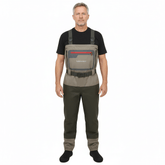

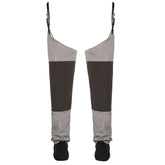
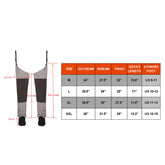
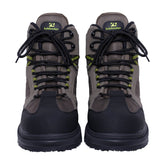
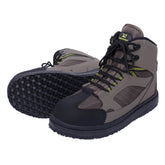
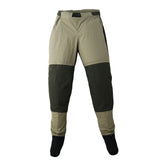

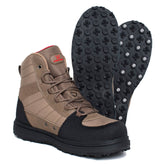
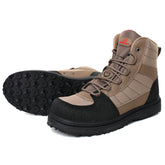
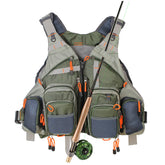

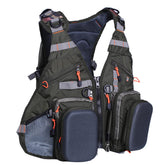
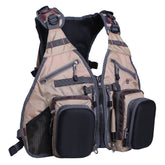
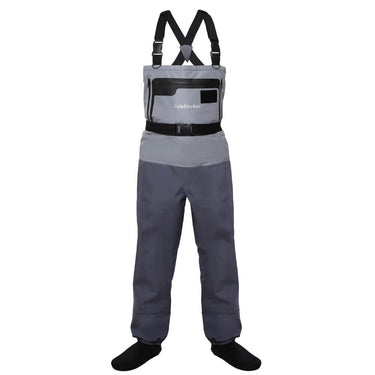
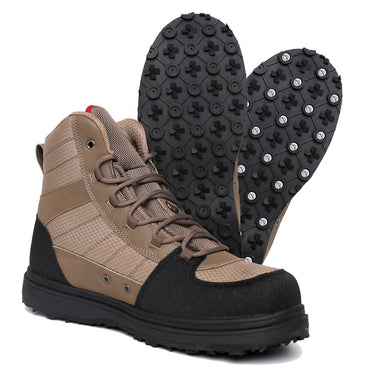

Leave a comment
Please note, comments need to be approved before they are published.